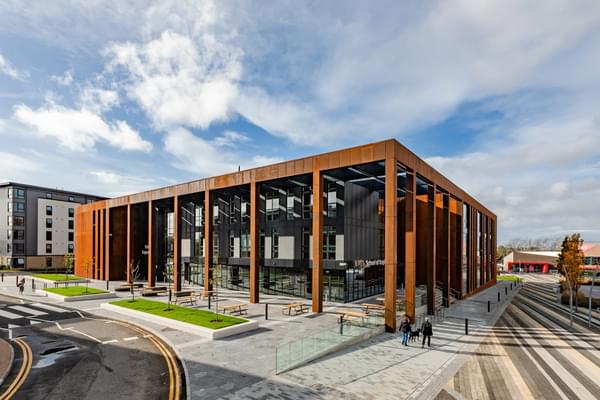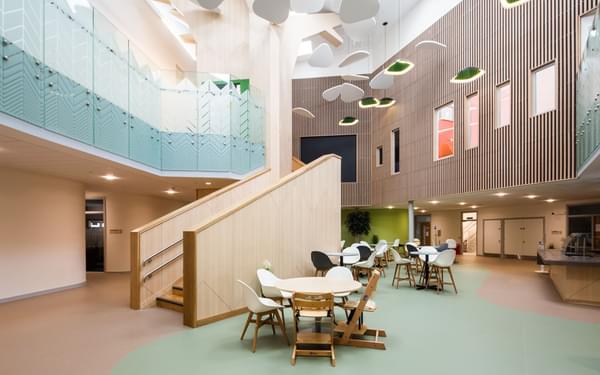Back to Articles
Unlock hidden savings: Why space utilisation matters for large estates
27th Mar 2024
Every square metre in your sprawling estate holds potential — for efficiency, for cost savings, and even for employee wellbeing. But are you truly making the most of it?
The truth is, underutilised space is a hidden drain impacting your bottom line and your people.
Think about it: even if you're only actively using a fraction of your space, you're likely paying for its full maintenance. Cleaning, heating, security — those building services don't differentiate between occupied and empty areas. This translates to wasted resources and unnecessary expenses.

Every square meter: A cost you can't ignore
Imagine your estate as a living organism, every square metre breathing, consuming energy, and generating expenses. The air it breathes needs heating, and with each blow of warmth, you inhale a weighty cost.
That same heat contributes to the ever-growing challenge of decarbonisation, leaving you with a dual burden: the initial expense of heating and the future cost of reducing the carbon footprint you've created.
Every unused corner, every empty desk, continues to draw on your resources, accruing business rates as an unwelcome overhead. As councils face increasing pressure, these rates are unlikely to decrease, leaving you with a bill that grows even as your space remains underutilised.
But the true cost doesn't stop there. Management, whether through service charges or dedicated teams, adds another layer of expense to each square metre. All the time, it's chipping away at your bottom line even when the lights are off.
While in those moments when the pressure mounts and space across an estate appears scarce on the surface, it’s easy to reach for the solution of a new building that, in turn, eats a huge proportion of constrained capital projects funding. All the time perpetuating the challenge of limited budget allocation.

The opportunity behind inefficiency
Regardless of the type of estate, pockets of inefficiency and wasted space are a universal challenge. There’s a golden opportunity to be smarter about how we understand space.
On a university campus, for example, underutilised lecture halls stand empty during off-peak hours while students struggle to find study spaces.
Our healthcare facilities grapple with underused administrative areas while waiting rooms overflow with frustrated patients.
In our new hybrid culture, commercial offices often boast rows of unoccupied desks, often on Mondays and Fridays, representing wasted rent and potential for collaboration.
Even industrial warehouses can be guilty of inefficiency, with poorly planned storage layouts hindering productivity and increasing travel distances for workers.
The question we ask is, are you truly sure you've squeezed every ounce of efficiency from your existing space? By challenging that assumption before embarking on a new build, you can unlock the potential of space utilisation and eliminate the need for an expensive new building altogether.
The Lambert Smith Hampton Total Office Cost Survey 2023 illustrates the bottom-line impact of defining the space you truly need. The study shows that office space costs vary dramatically, with extremes ranging from £68 per sq. ft. in Belfast, £77 in Newcastle and all the way up to a staggering £217 in London's West End. These figures encompass rent, rates, annualised costs, facilities management (both hard and soft), and management fees.
Now, consider that it is widely accepted that the average office worker requires roughly 100 sq. ft of space and apply that to today’s market.
In Belfast, an underutilised desk translates to £6,800 per year in unnecessary expenses. And that figure would jump to a shocking £21,700 in London’s West End.
If I hadn't already, I would guess I’ve caught your attention now.

Impact on wellbeing
But the impact goes beyond the financial. Spaces also lay the foundation for business success. Poor space utilisation can also hinder the performance and wellbeing of employees.
Cramped quarters, inadequate ventilation, and below-par lighting can lead to fatigue, reduced productivity, and even sickness. Therefore, more access to daylight and good air quality will ensure high productivity.
As a strong proxy for the turnover of air in the space, high carbon dioxide levels impact learning rates in schools, recovery rates in hospitals and call handling rates in call centres. While a global pandemic is also fresh in a memory, they also map very neatly onto the volume of germs in the air according to the latest guidance from CIBSE.
A study by Oxford Brookes University demonstrated 60% increase in task completion and an overall 12% productivity increase when healthy levels of CO2 were maintained.
Now, in terms of daylight, perfectly controlled studies are hard come-by. But every study I’ve come across shows a positive correlation between increased access to daylight with improved concentration, improved task completion, increased job satisfaction, reduced absenteeism and increased employee retention.
The ‘right size’ estate
So, now we can agree on its importance, how do we go about identifying the ‘right size’ estate? The answer lies in data-driven insights, powered by smart technology.
Imagine a network of sensors discreetly monitoring your space, gathering real-time data on occupancy, air quality, and energy consumption. This data becomes your key to unlocking a world of possibilities, including:
Optimised space allocation:
Identify underused areas and reallocate them for better functionality, saving costs on unnecessary rent or construction.
Reduced energy consumption:
Pinpoint spaces with the highest energy demand and optimise heating, lighting, and ventilation based on actual usage, leading to significant cost reductions and a smaller carbon footprint.
Increased employee wellbeing:
Monitor CO2 levels to ensure proper ventilation and air quality, creating a healthier and more productive work environment.

What can you do to optimise space across your estate?
By leveraging dynamic data modelling, you can move beyond guesswork and make informed, objective decisions about your space. It's no longer about assuming all seats are taken; it's about knowing exactly how your space is being used.
As we heard during Insider’s NE Large Estates Roundtable at the end of January, businesses operate in a competitive world, and large estates, more than ever before, are becoming costly to own, maintain and operate.
We’ can support you to gather and interpret the crucial data, presenting you with actionable engineering design, energy and sustainability-led insights that empower you to transform your estate into a data driven powerhouse.
Don't let your estate become a burden —create ‘right size’ spaces that works for you, for your employees, and for the environment.
This article originally featured in Insider in February 2024.














